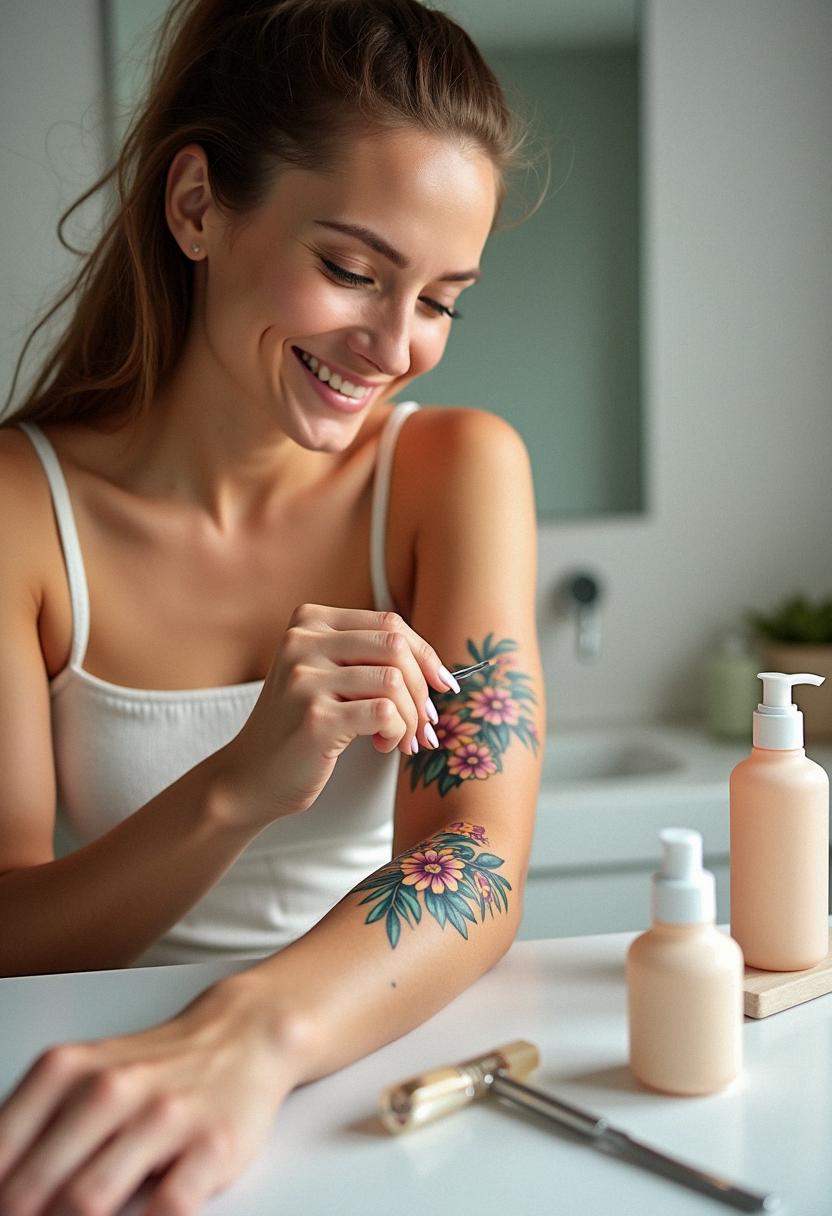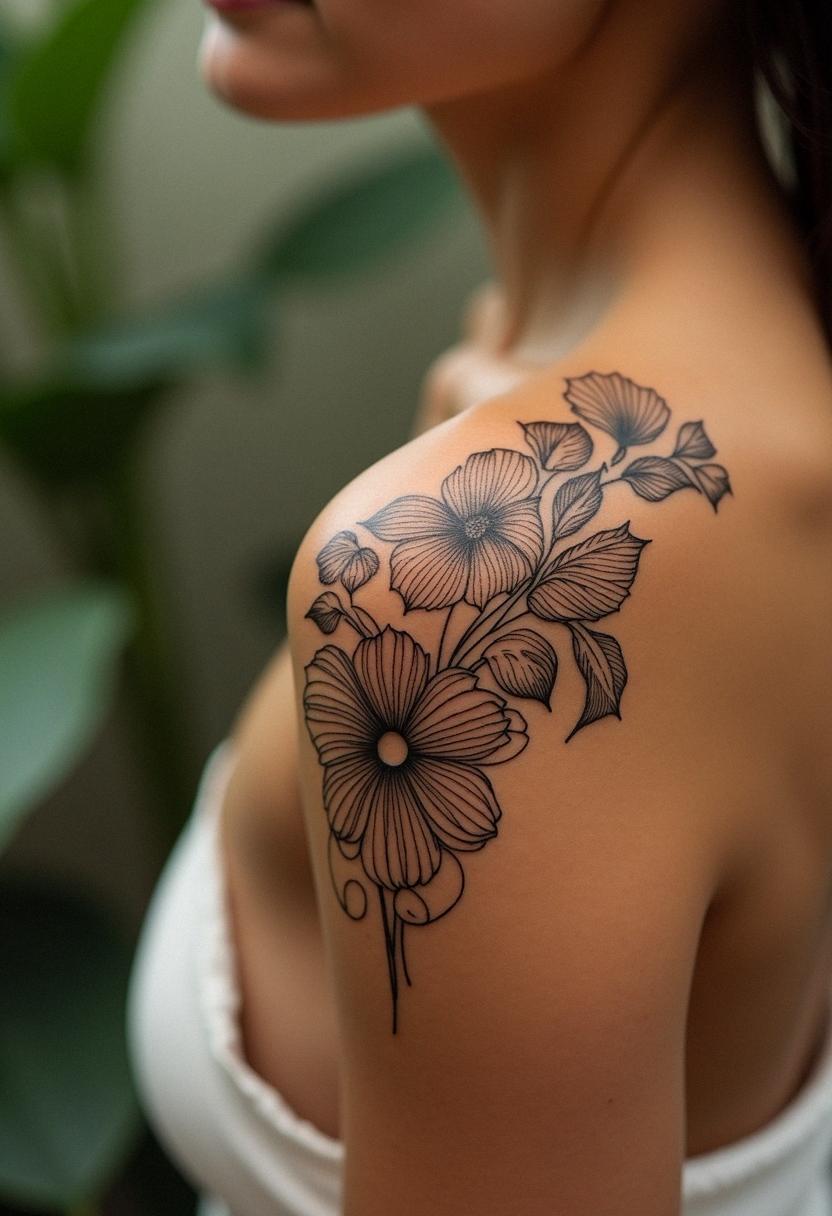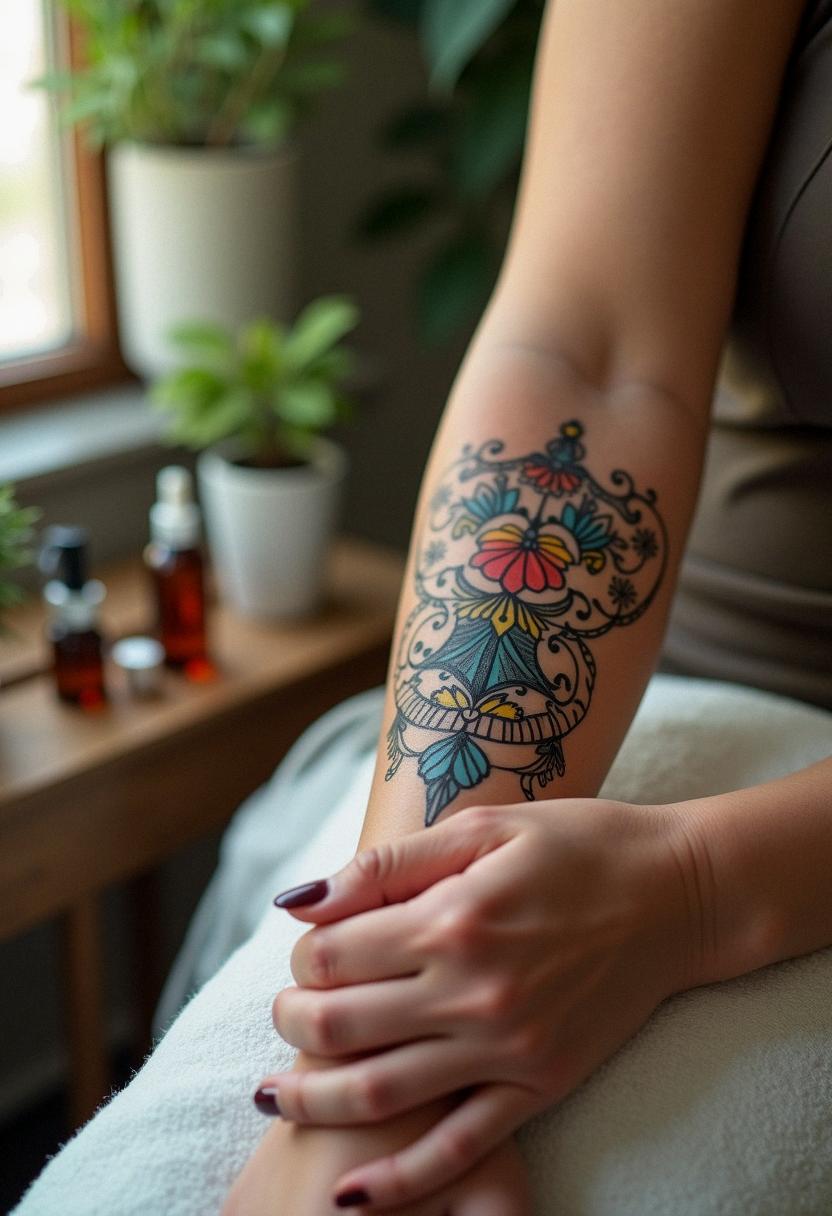Fake skin tattoos have emerged as an intriguing art form that blends creativity with temporary self-expression, capturing the attention of trendsetters and tattoo enthusiasts alike. They trace their origins to the inventive spirit of communities looking for flexible alternatives to permanent body art. I’ve seen firsthand how these tattoos allow individuals to experiment with bold designs, vibrant colors, and intricate patterns without the lifelong commitment that traditional tattoos entail. The purpose behind fake skin tattoos is simple yet profound—they offer a playful and reversible way to change your look, experiment with your style, or even test a design before considering a permanent piece. Their popularity has surged recently because they cater to a wide demographic, whether you’re seeking a fun, short-term change for a special event or trying out a design concept in a safe and forgiving way. Moreover, fake skin tattoos are celebrated for their versatility, as they can be applied to nearly any part of the body and in a myriad of artistic styles. As trends evolve, so do the ideas and techniques behind these tattoos, making them a dynamic and ever-engaging element in the world of body art. The journey into fake skin tattoos is as much about creativity as it is about embracing change in a way that feels personal and empowering.
Understanding What Constitutes a Fake Skin Tattoo: Definitions and Key Features
When you dive into the creative realm of fake skin tattoos, it’s essential to grasp what they truly represent and the defining features that set them apart from traditional body art. In essence, fake skin tattoos are temporary, often designed to mimic the appearance of permanent ink on your skin, though they don’t penetrate the surface like real tattoos. I’ve encountered many who love how these tattoos deliver high-quality designs that look as though they are deeply rooted in the skin, yet come off easily. The main features include vivid imaging, flexibility in design, and a range of durability that appeals to different lifestyles. They’re crafted using a variety of materials, from specially formulated temporary inks to decals and airbrushed techniques that can satisfy even the most discerning eye. One of the key benefits is the opportunity to express your artistic side without the long-term commitment or potential regrets associated with permanent tattoos. This means that fake tattoos allow you to take risks, test out avant-garde ideas, and effectively use your body as a temporary canvas for self-expression. Aside from aesthetic versatility, these tattoos are engineered for ease of application and removal, ensuring a smooth experience whether you’re a seasoned enthusiast or a curious newcomer to the trend.

Different Techniques and Materials Used in Creating Realistic Fake Skin Tattoos
The methods and materials behind fake skin tattoos are as fascinating as the designs themselves, offering a smorgasbord of techniques that cater to various preferences and artistic visions. Imagine the artistry of an experienced tattoo artist who can replicate the illusion of permanent ink using temporary means, a process that often entails airbrushing, custom decals, and special inks that adhere to the skin for varying durations. I’ve noticed that one popular approach involves hand-painting designs using water-based pigments, which offer vibrant colors and a distinct texture that closely mimics the look of real tattoos. The materials used are carefully chosen to balance durability and safety, often comprised of high-quality, hypoallergenic inks paired with adhesives that ensure the design stays put while still being gentle on the skin. Beyond the technical aspects, there’s an element of magic that comes with these techniques because they allow for spontaneous creativity—whether you’re adding glitter, metallic sheens, or even subtle layering effects that give your tattoo depth and dimension. This blend of craftsmanship and innovation means that fake skin tattoos are not only visually stunning but also built with a user’s comfort in mind, allowing you to wear them on a night out or even for a day of creative expression without worrying about long-term consequences.
Comparing Fake Skin Tattoos with Traditional Tattoos: Benefits and Drawbacks
There’s a lively debate around the merits of fake skin tattoos versus traditional ink, and it really comes down to what you value most in body art. From my perspective, the primary advantage of fake tattoos is their temporary nature; they let you experiment boldly without the permanence that can cause second thoughts. I’ve seen many friends embrace these designs for special occasions or to trial a design concept before diving into a permanent commitment, making fake skin tattoos an excellent option for those who are in a creative phase. Their ease of removal, lower cost, and minimal risk of skin reactions are enormous draws, especially for individuals who are still exploring their personal style. However, it’s not all sunshine and rainbows. Some may find that because they are temporary, fake tattoos might not offer the same depth of personalization or long-lasting impact as real ink. Traditional tattoos come with a storied legacy and a permanence that often signifies deep personal meaning, something that a temporary tattoo might not convey as fully. Moreover, while fake tattoos provide design flexibility, they might require frequent reapplication and careful maintenance to keep that vibrant appearance. At the end of the day, whether you lean towards permanence or the freedom complexity of temporary art, both forms offer unique advantages and potential challenges.
Safety and Skin Health Considerations When Applying Fake Skin Tattoos
When considering fake skin tattoos, it’s important to dive into the safety and skin health aspects that ensure your experience remains enjoyable and stress-free. I often stress that, while these tattoos are temporary, they still interact with your skin—meaning that choosing the right product and following proper application methods is crucial. Most of these tattoos are designed with skin safety in mind, using hypoallergenic inks and gentle adhesives that minimize the risk of irritation, though it’s always important to do a patch test first. The beauty of fake tattoos is that many of them are formulated without harsh chemicals typically found in some traditional tattoo inks, leading to a lower risk of allergic reactions. That said, my advice is to always ensure cleanliness, both before application and during removal, using gentle cleansers to avoid bacteria buildup. Overly aggressive removal methods or using non-specialized products can damage your skin, potentially leading to irritation or dryness. By paying attention to the instructions provided by manufacturers and opting for products that are dermatologist-approved, you can protect your skin while looking fantastic. This careful balance of beauty and safety is what makes fake skin tattoos such a popular option for many people seeking creative freedom without compromising their skin’s health.
Choosing the Right Fake Skin Tattoo: Design Ideas and Personalization Tips
Finding the perfect fake skin tattoo is as much about your personal style as it is about exploring diverse design ideas that spark your imagination. I always tell everyone that this is your chance to be bold, daring, and creative, since the temporary nature of these tattoos means you can experiment without limitations. Imagine a design that not only fits your mood but also mirrors your personality—be it abstract art, intricate tribal patterns, or even designs inspired by nature. Many individuals opt for designs that carry sentimental value or reflect their aspirations, and with fake tattoos, you have the flexibility to switch things up as your style evolves. My favorite tip is to mix and match styles—combine elements like vibrant colors with subtle gradients, or pair classic tattoo imagery with a modern twist to create a look that’s entirely unique. Be sure to consider the placement of your tattoo as well, since different areas of the body might accentuate certain designs better than others. Personalization is key, so don’t hesitate to tweak the design to include personal symbols or elements that resonate with you. With so many innovative materials and techniques at your fingertips, designing your fake skin tattoo can be a fun, deeply personal creative process that turns your body into a living canvas of self-expression.
Aftercare and Maintenance: Keeping Your Fake Tattoo Looking Fresh
Maintaining the vibrancy and longevity of your fake skin tattoo might seem like a delicate dance, but trust me, it’s all about a few careful steps that ensure your design remains as striking as the day it was applied. I love sharing practical tips on preserving the look of these tattoos because a little attention can make a world of difference, keeping the image crisp and your skin healthy. After application, it’s important to avoid over-exposure to water or harsh chemicals, as these can cause the tattoo to fade prematurely. Gentle cleansing with mild, fragrance-free soap and lukewarm water can help you maintain the design’s vividness while protecting the skin’s natural moisture. You might even consider applying a light, non-greasy moisturizer to keep your skin supple and extend the life of your artwork. If you’re planning a long event, giving your tattoo a little touch-up mid-event with a soft cloth and some water or designated touch-up solutions can help reinvigorate the design’s charm. I always remind folks that the key to a lasting, fabulous fake tattoo is to treat it with a bit of extra consideration—just like you would with any prized piece of art. It’s not just about looking good on the outside; it’s also about caring for your skin, making the whole experience as pleasant as possible.
Trends, Innovation, and the Future of Fake Skin Tattoos
The landscape of fake skin tattoos is rapid-fire, full of innovative ideas and ever-evolving trends that keep enthusiasts on their toes. I’ve noticed a surge in creative trends where designers are pushing the envelope, incorporating technology, LED elements, and even responsive inks that change hue depending on the mood of your outfit or the environment. This blending of art and technology is electrifying, as it opens up a whole new realm of personalization and temporary self-expression. Many artists now view your body as a dynamic canvas that can adapt to various creative whims, whether it’s for a major art installation, a themed party, or just because you’re feeling adventurous. It’s exciting to envision a future where the line between body art and wearable tech blurs even further, giving rise to tattoo concepts that can interact with apps and other digital devices. I love exploring the possibilities, as these innovations not only offer fresh aesthetic value but also make safety and comfort paramount by developing gentler materials and smarter application methods. As trends shift and the creative community continues to redefine what it means to wear art on your skin, the future of fake skin tattoos looks vibrant, engaging, and full of promise for those who love to push artistic boundaries.







Frequently Asked Questions About Fake Skin Tattoos
Q: Are fake skin tattoos safe for all skin types?
Absolutely, most fake skin tattoos are designed with hypoallergenic ingredients and come with detailed instructions for a patch test prior to full application, making them a safe option for most individuals. However, if you have particularly sensitive skin or any history of allergic reactions, it’s best to consult with a professional or test a small area first.
Q: How long do fake skin tattoos typically last?
Fake skin tattoos can last anywhere from a few days to over a week, depending on where they’re applied and how well you take care of them. For longer-lasting results, following proper aftercare instructions—such as avoiding excessive washing or rubbing—can help extend their life.
Q: Can I customize my fake skin tattoo design?
Definitely, one of the best aspects of fake skin tattoos is the flexibility they offer in personalization. Many products are designed so that you can edit colors, sizes, and even add extra touches, making this a perfect option if you love changing up your style frequently.
Q: What is the best way to remove a fake skin tattoo?
Most fake skin tattoos are designed to be easily removed with gentle cleansing agents available in most households. Simply applying a bit of baby oil or a mild soap solution and wiping away the tattoo usually does the trick, ensuring both effective removal and skin comfort.
